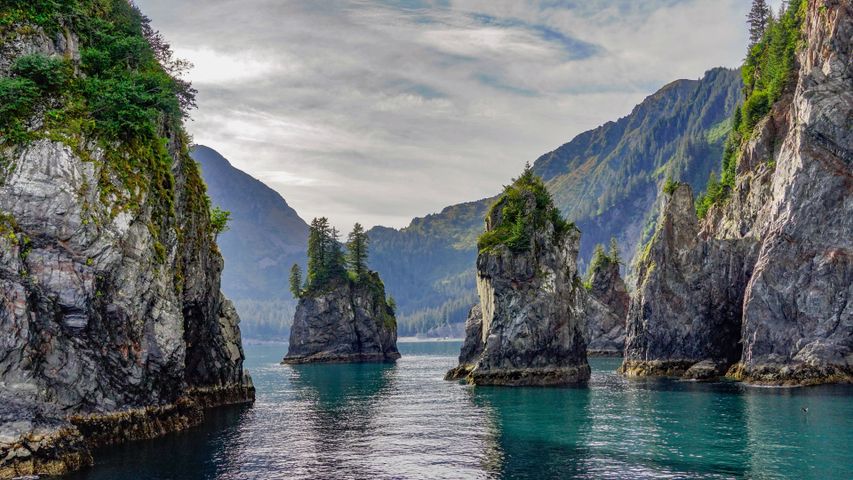The Needles, Isle of Wight, England
© CBCK-Christine/iStock/Getty Images Plu
The Needles
These sun-kissed sea stacks are The Needles on the Isle of Wight, part of a ridge of chalk hills which, during the last Ice Age, is thought to have stretched across the Solent to Old Harry Rocks on the Isle of Purbeck. Melting ice then released a deluge of water which flooded land and eroded the chalk ridge, severing the Isle of Wight from the mainland and leaving behind rock formations on either side of the gap. Today’s three remaining stacks are named after a fourth, needle-shaped rocky pinnacle known as Lot’s Wife, which collapsed into the sea during a storm in 1764.
Its stump is still visible at low tide, forming a dangerous reef – one of several obstacles for sailors. The tip of the Isle of Wight is exposed to harsh weather, a weather station often records the strongest winds in Britain, and many ships have gotten into trouble at this protected wreck site. The remains of two warships have been discovered here. The HMS Pomone sunk here in 1811, as did The Assurance, which was lost in 1753 while returning to Portsmouth from Jamaica.
At the end of the sea stacks sits The Needles Lighthouse, now automated, which has been guiding ships here since 1859. At the top of the image is The Needles Old Battery, a Grade II-listed Victorian fort built in 1862, which saw service during both World Wars. There’s lots to see on the Isle of Wight, be it stunning natural scenery or historic sites.
Related Images
Bing Today Images




 Beach in Santa Catarina, Brazil
Beach in Santa Catarina, Brazil
 Vila Franca Islet, São Miguel Island, Azores, Portugal
Vila Franca Islet, São Miguel Island, Azores, Portugal
 Greater flamingos, Lüderitz, Namibia
Greater flamingos, Lüderitz, Namibia
 Barrier reef off Grande Terre, New Caledonia, France
Barrier reef off Grande Terre, New Caledonia, France
 Dunluce Castle, County Antrim, Northern Ireland
Dunluce Castle, County Antrim, Northern Ireland
 Indian Head Cove, Bruce Peninsula National Park, Ontario, Canada
Indian Head Cove, Bruce Peninsula National Park, Ontario, Canada
 Magellanic penguins, Volunteer Point, Falkland Islands
Magellanic penguins, Volunteer Point, Falkland Islands
 Spire Cove in Kenai Fjords National Park, Seward, Alaska, United States
Spire Cove in Kenai Fjords National Park, Seward, Alaska, United States

